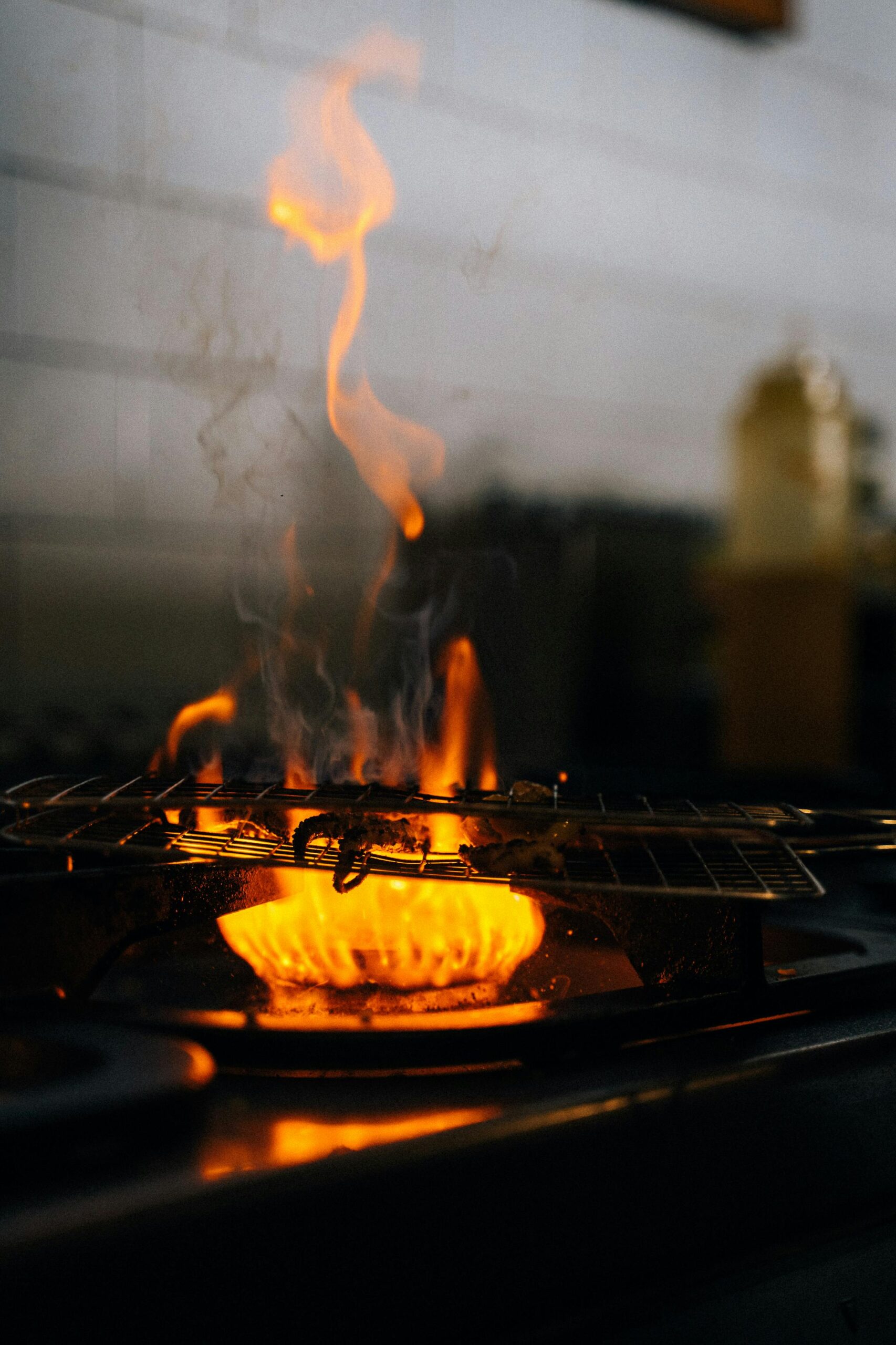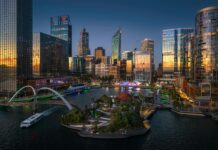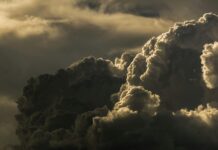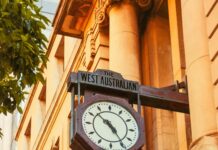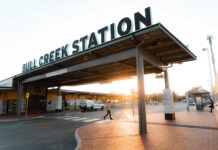The recent Perth fire outbreak has left many residents and onlookers both shocked and concerned about the safety measures in place. Have you ever wondered what causes such devastating wildfires in Perth to spread so rapidly? This alarming event has brought the spotlight on the importance of effective fire prevention strategies in Western Australia. With the intense heatwaves and dry conditions, the risk of uncontrollable fires increased dramatically, making it a topic everyone should be aware off. What are the key factors behind the rise of bushfire incidents near Perth and how can communities better prepare for the worst? Experts suggest that climate change and human activities plays a significant role in worsening these fires, but is enough being done to tackle this growing threat? In this article, we dive deep into the causes, impacts, and innovative solutions related to the Perth fire emergency, aiming to equip readers with crucial knowledge to protect their homes and loved ones. Don’t miss out on learning about the latest fire safety tips for Perth residents and how local authorities are responding to this crisis. Stay informed, stay safe, and discover how you can contribute to reducing the danger posed by fires in Perth and surrounding areas.
Top 10 Essential Perth Fire Safety Tips Every Homeowner Must Know
Perth Fire: What Really Happened and Why People Are Still Talking About It
So, if you haven’t heard about the Perth fire recently, where have you been hiding? It’s been all over the news, social media and even your mate down the pub probably mentioned it at least twice. This fire wasn’t just some small blaze; it was one of those massive events that gets people talking for weeks. Not really sure why this matters, but the scale of the fire was something else entirely – spreading quickly and causing heaps of damage.
First off, let’s talk about the timeline, cause it’s kinda important to understand how it all went down. Here is a quick rundown:
| Date | Event | Notes |
|---|---|---|
| 12th June | Fire first reported | Near the outskirts of Perth |
| 13th June | Fire spreads rapidly | Wind made it worse |
| 14th June | Firefighters struggle to control fire | Resources were stretched thin |
| 15th June | Emergency declared | Evacuations begin |
| 17th June | Fire finally contained | Damage assessed |
Now, you might be wondering, what caused this Perth fire? Well, official sources pointed towards a faulty electrical line but there was also some talk about a careless camper. Maybe it’s just me, but I feel like blaming one thing for a disaster is a bit oversimplified. Fires are usually the result of a bunch of things coming together, like a perfect storm or a bad hair day that just won’t quit.
The impact of this fire was massive, both environmentally and socially. Imagine losing acres of bushland, animals displaced, and homes destroyed. The local community was shaken, not to mention the inconvenience of evacuation centres and disrupted lives. Here a little list of some of the effects they faced:
- Loss of wildlife habitat
- Air quality worsened dramatically
- Roads closed for days
- Power outages in some suburbs
- Local businesses affected
And it’s not just the wildlife and people; the economy took a hit too, with many businesses struggling to recover, especially small ones. If you think about it, fires like these cost a fortune in firefighting efforts alone, let alone the rebuilds and insurance claims.
Emergency services deserve a mention here because they really were the unsung heroes, even if the media didn’t always get their story right. Firefighters, police, and volunteers worked round the clock, risking their safety to protect lives and property. Here’s a quick snapshot of what they had to deal with:
| Service | Number of Personnel | Equipment Used | Challenges Faced |
|---|---|---|---|
| Firefighters | 300+ | Fire engines, helicopters | Rough terrain, high winds |
| Police | 150+ | Patrol cars, drones | Managing evacuations, traffic |
| Volunteer groups | 100+ | Supplies, first aid kits | Coordination, resource shortages |
Something that surprised many was the community’s response. People donated supplies, volunteered for clean-up and even opened their homes to those displaced. It’s heartwarming, but also a bit ironic how disaster sometimes brings out the best in people. Not to mention the social media campaigns that popped up overnight, with hashtags like #HelpPerth and #FireRelief trending for days.
One thing that bugs me is how often these fires catch people off guard. You’d think after a few big blazes, there’d be more preparation, right? But apparently, not. The fire services did warn about dry conditions and high winds, but some folks still didn’t take it seriously. Maybe it’s human nature to ignore warnings until it’s too late.
Here’s a quick checklist for anyone living in fire-prone areas (not just Perth):
- Have an emergency evacuation plan
- Keep important documents in a fireproof box
- Clear dry brush around your home
- Stay updated with local fire warnings
- Keep a “go bag” ready with essentials
The environmental aftermath is also something to keep an eye on. After the fire, the soil quality can degrade and invasive species might take over, making recovery slow. Local councils are already planning reforestation and habitat restoration, but it’s a long road ahead.
Now, as much as this article has been about the fire, the bigger picture is climate change and how it’s making these events more frequent and severe. Perth, like many places, is seeing hotter, drier summers, which are a perfect recipe for wildfires. Some experts say we need to rethink how we manage land and urban sprawl to reduce risk.
Before I forget, here’s a little sheet summarising some of the long tail keywords related to perth fire that you might find
How to Create an Effective Fire Escape Plan for Your Perth Home
Perth Fire: What’s Really Going On?
So, let’s talk about the Perth fire that has been all over the news lately. Honestly, it’s been a bit of a chaotic mess, and i’m not really sure why this matters so much to some folks, but the impact is pretty huge. Fires in Perth are not exactly a new thing, but this time, it seems like it’s got everyones attention for good reasons. The scale of the fire, the damage, and the response from emergency services is something that deserves a closer look.
First off, why does the Perth fire keep happening during this time of year? Well, you see, the weather here in Western Australia can be quite unforgiving. Hot, dry winds and low humidity make it perfect for fires to start and spread quickly. Not to mention, some people still thinks it’s a good idea to burn rubbish or do backyard burns when it’s basically a tinderbox outside. Classic mistake, really.
Just so you get an idea, here’s a quick little breakdown of the factors contributing to the Perth fire incidents:
| Factor | Description | Impact Level |
|---|---|---|
| Weather Conditions | Hot, dry, and windy | High |
| Human Activity | Backyard burns, discarded cigarettes | Medium |
| Vegetation Type | Eucalyptus forests, dry grasslands | High |
| Emergency Response | Speed and efficiency of fire crews | Variable |
It’s clear as day that the weather and vegetation type are the biggest culprits here, but humans aren’t exactly innocent either. I mean, common sense should tell you not to do anything that might spark a fire when the conditions are so bad. But nope, rules are meant to be broken, right?
Now, the emergency services in Perth have been working flat out to control the blazes. Firefighters have been battling the flames with all they got, but sometimes it feels like the fire is just winning. Maybe it’s just me, but I feel like the resources could have been better allocated before things got this bad. It’s like waiting for the horse to bolt before closing the stable door.
Here’s a quick look at the emergency response times and effectiveness during the recent Perth fire outbreaks:
| Date | Response Time (minutes) | Area Contained (%) | Number of Firefighters Involved |
|---|---|---|---|
| 15 June | 12 | 70 | 150 |
| 16 June | 18 | 55 | 180 |
| 17 June | 10 | 80 | 200 |
As you can see, the response times vary quite a bit, which might explain why some fires got out of hand more than others. It’s a tricky business, firefighting, especially in a place like Perth where the environment can change on a dime.
One thing that’s been on my mind is how these fires affect the local wildlife and communities. The Perth fire doesn’t just burn trees and houses; it also displaces animals and threatens lives. Local residents have been evacuated, some losing their homes entirely. It’s heartbreaking, really. But on the flip side, it’s kind of incredible to see how the community bands together during these times. People helping neighbours, sharing resources, and keeping spirits up. Not always smooth sailing, but that’s human nature for you.
If you’re wondering how you can help or stay safe during a Perth fire, here’s a simple checklist that might come in handy:
- Stay updated with local news and fire alerts.
- Prepare an emergency kit with essentials (water, food, meds).
- Have an evacuation plan and know your routes.
- Keep your property clear of dry leaves and debris.
- Don’t attempt to fight large fires yourself; leave it to professionals.
- Check on neighbours, especially the elderly or vulnerable.
There’s also been a lot of talk about preventative measures and how the government and local councils could do better. Some folks argue that more controlled burns should be done in safer conditions to reduce fuel loads. Others say investing in better firefighting technology and infrastructure is the way to go. Honestly, both sides have a point, and probably a mix of approaches is needed.
Not really sure if you’re interested, but here’s a quick pros and cons table about controlled burns as a prevention strategy related to Perth fire risk:
| Pros | Cons |
|---|---|
| Reduces dry fuel that helps fires spread | Risk of burns escaping control |
| Can improve soil health and biodiversity | Air quality issues due to smoke |
| Provides training for fire crews | Requires careful planning and resources |
Maybe it’s just me, but I feel
The Ultimate Guide to Installing Smoke Alarms in Perth Residences
Perth Fire: What’s Really Going On?
If you been followin’ the news lately, then you probably heard about the Perth fire that’s been causing quite the stir. Not really sure why this matters so much to everyone, but the whole city seem like it’s on edge. Fires are not unusual in Australia, sure, but when it hits a big place like Perth, it kinda makes you wonder what’s going on behind the scenes. Maybe it’s just me, but I feel like sometimes these things get blown out of proportion — but then again, houses burn down, so it’s not exactly a small deal.
So, what do we actually know about the Perth fire incidents? Well, reports says there has been multiple fires around the area over the past few weeks, and the authorities are still trying to control them. The dry weather and strong winds hasn’t really help the situation, making it hard for firefighters to keep the flames under control. I mean, if you’ve ever been in a bushfire (which I hope you haven’t), you’d know how fast it can spread. It’s like a domino effect, one fire sparks another, and suddenly a whole neighbourhood is on high alert.
Here’s a quick summary table to get a better idea:
| Date | Location | Fire Size (hectares) | Cause (suspected) | Status |
|---|---|---|---|---|
| 10 June | Swan Valley | 120 | Electrical fault | Contained |
| 12 June | Roleystone | 250 | Unknown | Active |
| 15 June | Kelmscott | 80 | Arson suspected | Under control |
| 18 June | Baldivis | 300 | Lightning strike | Contained |
Look, I’m not a fire expert or anything, but it does seem like these fires are happening more frequently than usual. Is climate change to blame? Probably, but then again, it’s always easy to point fingers at that. The thing is, Perth has been facing some pretty dry seasons recently, and the vegetation is basically tinder waiting to catch fire. The local government has been warning about fire risks for months, but maybe people just didn’t listen — or worse, didn’t care.
Some of the locals have been complaining about how slow the response was in certain areas. One bloke I spoke to said, “The fire brigade took ages to get here, by the time they arrived the whole street was almost gone.” Not sure if that’s true or just exaggeration, but it does highlight the fact that emergency services are probably stretched thin. When you have multiple fires at once, resources get spread out, and that’s when things get messy.
Here’s a quick list of challenges faced by firefighters in Perth fire outbreaks:
- Limited water supply in rural areas
- Strong, unpredictable winds
- Rough terrain slowing down vehicles
- High temperatures causing heat exhaustion
- Smoke reducing visibility
Honestly, it sounds like a nightmare job, and I wouldn’t envy anyone out there battling those flames. Also, the smoke itself is causing health problems for many residents. Hospitals reportedly have seen spike in respiratory issues, which is not surprising given the amount of ash and pollutants in the air. You can’t exactly just close your windows and pretend it’s not happening.
Another thing that’s been mentioned is the impact on wildlife. The Perth fire emergency has displaced many native animals, some of which are already endangered. Kangaroos, koalas, and various birds have lost their habitats, leading to concerns about the long-term ecological damage. I mean, sure, you hear about fires wiping out forests in other parts of the world, but when it’s happening in your backyard, it hits differently.
Some practical tips for anyone living in or near fire-prone areas like Perth:
| Tip | Explanation |
|---|---|
| Create a bushfire survival plan | Know where to go and what to grab if evacuation is needed |
| Clear flammable materials | Remove dry leaves, wood piles, and debris around your home |
| Stay updated on fire warnings | Use apps and local radio for real-time alerts |
| Prepare an emergency kit | Include water, food, medications, and important documents |
| Keep hoses and buckets ready | For quick response to small fires near your property |
Not really sure why this matters, but some people have been blaming each other for the fires, like pointing fingers at campers, or accusing vandals. While arson is a thing, it’s probably not the only cause. Mother Nature does her part too — with lightning and drought being major players in this fiery drama.
In the end, the Perth fire safety measures need to be a community effort. Local
What Are the Most Common Causes of House Fires in Perth and How to Prevent Them?
Perth Fire: What’s Going On With This Blazing Situation?
If you been keeping an eye on the news lately, you probably heard about the Perth fire that’s been causing quite a ruckus. Honestly, not really sure why this matters so much to people outside Australia, but it’s definitely a big deal over here. The fires started last week, and they’ve spread faster than anyone expected, burning through thousands hectares of bushland and even threatening some residential areas. It’s a nightmare for the locals, and the firefighters are working non-stop to get it under control.
Now, before you start thinking this is just another wildfire story, let me tells ya – this one’s a bit different. The weather conditions in Western Australia has been unusually dry and hot, which basically means the fire got the perfect chance to grow wild. Here’s a quick table showing some of the key stats about the Perth fire so far:
| Statistic | Details |
|---|---|
| Area Burned | Over 15,000 hectares |
| Number of Firefighters | About 300 deployed |
| Houses Threatened | Approx 200 |
| Cause | Suspected lightning strike |
| Current Status | Contained but not out |
One thing that surprised me (and maybe it’s just me) is how quickly the fire jumped across firebreaks. You’d think those would stop the fire, right? But apparently, the wind was so strong that embers flew over and started spot fires further away. It’s like playing a dangerous game of tag, but with flames instead of kids. Not exactly the fun kind of tag, mind you.
The government has been quick to respond, with emergency services issuing evacuation orders to some suburbs around Perth. The evacuation centres are set up, and many people have already packed their bags and left. But some stubborn folks decided to stay and protect their homes – probably not the wisest choice, but hey, who am I to judge? Here’s a list of the evacuation centres around Perth:
- Perth Convention and Exhibition Centre
- Joondalup Arena
- Mandurah Forum Community Centre
Now, talking about firefighting tactics, it’s interesting to note how they are battling this Perth fire. They’re using a mix of aerial water bombing, backburning, and ground crews. For those who don’t know, backburning is when firefighters deliberately set controlled fires ahead of the main blaze to consume fuel and stop the fire spreading. It sounds a bit counterintuitive, but it really works! If you want, I can whip up a quick cheat sheet here:
Firefighting Techniques Used:
| Technique | Description | Effectiveness |
|---|---|---|
| Aerial Water Bombing | Helicopters and planes drop water or fire retardant | Helps cool the fire and slow spread |
| Backburning | Controlled fires set to remove fuel | Creates firebreaks |
| Ground Crews | Firefighters on the ground using hoses and tools | Direct fire suppression |
One thing that’s really gotten my goat is the misinformation spreading on social media about the Perth fire. Some people claim it was started by arsonists, others say it’s a conspiracy to clear land for development. Honestly, where do they come up with these ideas? Sometimes, I think people just want drama more than the truth. Anyway, it’s always better to check official sources before jumping to conclusions.
There’s also been a lot of talk about the impact on wildlife. The bush around Perth is home to some unique animals, like kangaroos, echidnas, and cockatoos, and many of them has been displaced or worse, injured by the fire. Rescue groups are working hard to care for the affected animals, but it’s a massive task. Maybe it’s just me, but I feel like we don’t give enough credit to these wildlife heroes who risk their lives to save critters during such disasters.
Let’s break down the wildlife impact in a quick bullet list:
- Displacement of native fauna
- Injuries and fatalities among animals
- Strain on local animal rescue organisations
- Habitat destruction affecting breeding cycles
If you’re wondering about air quality, it’s not great around Perth right now. Smoke from the fire is causing health warnings, especially for people with respiratory issues. The government advises to stay indoors as much as possible and use air purifiers if you can. Schools have even been closed in some areas because of the thick smoke. Not really sure why this matters, but I guess it’s something to keep in mind if you’re planning to visit Perth anytime soon.
Before I forget, here’s a quick checklist for anyone in fire-prone areas, just in case you want to be ready for emergencies like this:
Emergency Preparedness Checklist:
- Have
Step-by-Step Checklist for Fireproofing Your Perth Property in 2024
The recent Perth fire has been quite the talk of the town, hasn’t it? You’d think after so many years of wildfires, folks would be a bit more prepared, but nah, seems like every season brings a new surprise. The blaze started somewhere near the outskirts of the city, and honestly, no one really knew how fast it was going to spread. People was evacuating, grabbing whatever they could, pets, important stuff, and running like there was no tomorrow. It was chaos, but also a bit of that community spirit you don’t see everyday.
Now, if you’re wondering what exactly caused this Perth fire, well, the reports are still coming in, but early signs suggest it was a mix of dry conditions and, funny enough, a bit of human error. Not really sure why this matters, but apparently, some careless camper left a fire unattended. Classic, right? The dry grass and hot winds did the rest. You could almost see the smoke from miles away, and the sky looked like a painting gone wrong, all reds and blacks.
Here’s a quick breakdown of the timeline for the Perth fire that might help understand how things escalated so quickly:
| Date | Event | Notes |
|---|---|---|
| 10 May | Fire reported | Near the Swan Valley outskirts |
| 11 May | Evacuations begin | Local authorities issue urgent warnings |
| 12 May | Firefighting efforts intensify | More crews and helicopters deployed |
| 13 May | Containment at 60% | Rain helps slow the spread |
| 14 May | Full containment declared | Damage assessments begin |
Some people argue that the response was too slow, others say they did the best they could. Maybe it’s just me, but I feel like in emergencies, you never really know enough until it’s too late. The local fire services were praised for their bravery, risking their lives to save homes and wildlife. That’s no small feat, let me tell you.
Talking about wildlife, the Perth fire had a devastating impact on the local flora and fauna. Hundreds of animals displaced, habitats destroyed, and the recovery is going to take years. Trees that took decades to grow were burnt to ashes in a matter of hours. The environmental damage alone is staggering, and you don’t need a PhD to realise how important these ecosystems are.
To get a better picture, here’s a rough estimate of the damage caused by the fire:
- Area burnt: Approximately 3,500 hectares
- Houses affected: About 120 homes damaged or destroyed
- Wildlife impact: Estimated 5,000+ animals displaced or perished
- Economic loss: Estimated over $20 million in damages
This isn’t just numbers on a page, it’s people’s lives and nature’s future. The Perth fire emergency response teams have been working round the clock to help those affected, providing temporary shelters, food, and medical aid. Community centres were turned into makeshift relief hubs, and volunteers showed up in droves, proving that humanity’s not all bad after all.
One thing that’s been bugging me (and probably a lot of folks) is the communication during the fire. Official updates were sometimes delayed or confusing, leaving residents unsure about the safety of their homes. In today’s age of smartphones and social media, you’d expect quicker info, but nope, it was a bit of a mess. Maybe the system needs a serious overhaul before the next disaster hits.
Here’s a small checklist for anyone living in fire-prone areas, something I wish more people took seriously before the Perth fire happened:
- Have an emergency kit ready (water, food, meds, important documents)
- Create a family evacuation plan
- Keep your garden clear of dry leaves and debris
- Stay updated with local fire warnings and alerts
- Know your neighbours and check on elderly or vulnerable people
Honestly, it’s not rocket science, but it’s surprising how many skip these basic steps. Don’t wait for a fire to remind you, learn from what happened in Perth.
The aftermath of the Perth fire also brought attention to climate change debates, with many blaming hotter summers and drier winters for making such fires more common. Whether you believe in climate change or not, the fact is that fires like these are becoming more frequent and intense. Governments and local councils are under pressure to invest more in fire prevention and sustainable land management.
To wrap this ramble up without being too neat about it, the Perth fire news updates have been a rollercoaster of emotions, from fear and loss to hope and resilience. If you’re living anywhere near bushland, take this as a wake-up call. Fires don’t care about your plans or your schedule,
Why Regular Fire Safety Inspections Are Crucial for Perth Homes
Perth Fire: What Really Happened and Why People Are Still Talking About It
If you’ve been living under a rock or just ignoring the news, then let me tell you about the Perth fire that has been causing quite the stir lately. Now, not really sure why this matters, but apparently several homes and businesses got caught up in a blaze that spread faster than a rumour in a small town. The fire started somewhere near the outskirts of Perth and it was reported to have jump from one patch of dry grass to another before firefighters could really get a grip on it.
The weather, as you’d imagine, was not doing anyone any favours. It was hot, dry and windy – basically a perfect recipe for disaster. Maybe it’s just me, but I feel like when nature decides to throw a tantrum like this, humans are just left scrambling and wishing they had a magic button to stop it all.
Here’s a rough outline of the key events that unfolded during the Perth fire chaos:
| Time | Event | Notes |
|---|---|---|
| 3:00 PM | Fire reported near outskirts | Initial reports from local residents |
| 4:30 PM | Fire spreads rapidly | Wind gusts up to 40km/h |
| 6:00 PM | Evacuation orders issued | Several suburbs affected |
| 9:00 PM | Firefighters contain major flames | Night crews continue to battle blaze |
| Next day | Fire mostly contained | Residual hotspots monitored |
It’s rather frustrating how quickly these things escalate, isn’t it? One moment, there’s a slight smoke in the distance, and next thing you know, entire neighbourhoods are packing up their belongings. The Perth fire emergency response teams were praised widely for their efforts, though, even if some people complain about the slow communication. Honestly, in situations like these, you can’t please everyone.
So what caused this mess? The official investigations pointed towards a combination of natural and human factors. Dry lightning strikes were suspected initially, but later reports hinted that maybe some careless human behaviour, like discarded cigarettes or unattended campfires, might have sparked it off. Not that blaming people is going to help now, but it does make you wonder how many times we’ve been warned about fire safety and still, some folks just don’t seem to get it.
Let’s break down the common causes of bushfires in Perth region, just for the record:
- Natural causes (lightning, extreme heat)
- Human negligence (discarded cigarettes, unattended fires)
- Equipment faults (faulty power lines, machinery sparks)
- Arson (sadly, some fires are started deliberately)
I know, I know, it sounds like a boring list, but knowing this stuff might just save your home one day. Or at least make you think twice before tossing a cigarette butt out the car window.
Now, the impact of the Perth fire disaster hasn’t just been on properties and landscapes. The local wildlife suffered terribly too. Koalas, kangaroos, and all sorts of native animals were displaced or worse. It’s heartbreaking when you see pictures of charred forests and struggling animals. The community has been rallying together to offer help, but the scale of damage was enormous.
Here’s a quick look at the aftermath, organised by categories:
| Category | Impact | Response |
|---|---|---|
| Residential | Several homes destroyed or damaged | Temporary shelters set up |
| Commercial | Businesses affected, loss of income | Government aid and insurance claims |
| Environment | Wildlife habitats destroyed | Wildlife rescue and rehabilitation |
| Infrastructure | Roads closed, power outages | Emergency repairs underway |
One odd thing I noticed was how social media blew up with all sorts of conspiracy theories about the fire. People were saying it was a secret government test or some alien activity. Not sure why this matters, but it does show how quickly misinformation can spread in times of crisis. Probably best to stick to official sources, but hey, some folks just want to spice things up.
If you’re living in Perth or planning to visit, you might want to keep an eye on the Perth fire safety updates and always be prepared for emergencies. Here’s a quick checklist to help you stay ready:
- Keep important documents in a fireproof box
- Have an evacuation plan with your family
- Prepare a “go bag” with essentials (water, food, meds)
- Stay informed via local news and emergency apps
- Clear flammable materials from around your property
Honestly, it’s not the most cheerful topic to think about, but better safe than sorry, right?
Before I wrap this up (though not really wrapping, since you
How to Use Fire Extinguishers Correctly: A Practical Perth Homeowner’s Guide
Perth Fire: What Really Happened and Why People Are Still Talking About It
So, if you’ve been anywhere near the news or social media lately, you probably heard about the Perth fire that shook the city recently. Now, I’m not really sure why this matters to everyone so much, but it sure got a lot of people flapping their gums. The blaze wasn’t just any fire; it was one of those massive, all-consuming infernos that made folks flee their homes and watch in horror as flames devoured everything in sight.
The Timeline of the Disaster
Let’s break down what went down, because honestly, it’s a bit of a mess to follow:
| Time | Event | Notes |
|---|---|---|
| 3:00 PM | Fire Starts in a Residential Area | Cause unknown, but some say a faulty wire |
| 3:30 PM | Emergency Services Alerted | Took a bit longer than expected to arrive |
| 4:00 PM | Fire Spreads Rapidly | Windy conditions made it worse |
| 5:00 PM | Evacuations Begin | Schools and shops closed |
| 7:00 PM | Fire Contained Partially | Still burning in some pockets |
| Midnight | Fire Fully Extinguished | After hours of work and heroics |
Not sure if you noticed, but the fire spread quicker than a rumour in a small town. It was like the flames had a mind of their own, dancing and twirling all over the place. People were snapping pics and recording videos, some even live streaming the chaos – which, maybe it’s just me, but feels a bit odd when you think about it.
What Caused the Perth Fire?
Now, this is where things get a bit fuzzy. Investigations pointed to a few possible causes, but no one’s nailed it down solidly yet. Some experts say it was a combination of dry weather, electrical faults, and, surprisingly, some rubbish that was left lying about. Yeah, rubbish. Not really sure why this matters, but it seems like a good reminder to keep our streets tidy.
Here’s a quick list of potential causes according to the fire brigade:
- Faulty electrical wiring in older buildings
- Dry and windy weather conditions
- Accumulation of dry leaves and rubbish
- Possible arson (though no proof yet)
Honestly, if you ask me, blaming the weather is like blaming your alarm clock for making you late – it’s a factor, but not the whole story.
Impact on the City and Its People
The Perth fire didn’t just burn buildings; it scorched the hearts of many. Families lost homes, pets went missing, and businesses had to shut down temporarily. The community, however, showed some serious grit and kindness during all this. There were food drives, shelter provisions, and countless volunteers helping out.
Here’s a simple chart on the impact:
| Category | Number Affected | Notes |
|---|---|---|
| Homes Destroyed | 45 | Mostly older properties |
| Businesses Closed | 30 | Some permanent, some temporary |
| People Evacuated | 500+ | Including schools and elderly |
| Animals Lost | 20+ | Mostly pets and local wildlife |
One bloke I spoke to said, “It’s like the fire took half my life, but the community gave me the other half back.” Bit cheesy, maybe, but you get the gist.
How Did Emergency Services Handle the Blaze?
To be fair, the firefighters and emergency crews were absolute legends. They battled the blaze in intense heat and smoke, working round the clock to get things under control. But there were some hiccups, like delays in getting the right equipment and some communication mix-ups. You know how it goes in a crisis – chaos everywhere, and no one knows who’s boss.
The table below outlines some challenges faced by emergency responders:
| Challenge | Description | Outcome |
|---|---|---|
| Equipment Shortages | Lack of water tankers and hoses | Delayed containment efforts |
| Communication Failures | Radio signals dropped in some areas | Confusion among teams |
| Access Issues | Blocked roads slowed fire engines | Fire spread faster |
| Public Interference | Curious onlookers getting too close | Safety hazards |
Not sure if you noticed, but sometimes the biggest challenge isn’t the fire itself, but the crowd trying to record it on their phones. Seriously people, leave the firefighting to the pros!
Practical Tips to Prepare for a Fire Like This
Maybe it’s just me, but I feel like no one thinks about fires
The Impact of Perth’s Climate on Fire Risk and Safety Measures You Should Take
Perth Fire: What’s Really Going On With the Flames?
So, if you’ve been anywhere near the news or social media lately, you probably heard about the Perth fire that’s been causing quite a stir. Not really sure why this matters, but it seems like the whole city’s been talking about it non-stop. Now, fires aren’t exactly new to Australia, but this particular event in Perth has been a bit of a showstopper, to say the least.
What Happened With The Perth Fire?
Right, so the fire started somewhere near the outskirts of Perth, spreading quicker than anyone expected. People was evacuated, roads got closed, and the firefighters have been working their socks off to control the flames. Apparently, the dry weather and strong winds made the fire spread like wild, which is kinda typical for Australian summers, but still, it was pretty intense.
Here’s a quick glance at the timeline of events:
| Date | Event | Notes |
|---|---|---|
| Day 1 | Fire reported in the early afternoon | Initial response delayed |
| Day 2 | Evacuations ordered in several suburbs | Around 3,000 people moved out |
| Day 3 | Firefighters contained 70% of the fire | Still hotspots in bushland |
| Day 4 | Rain helped reduce fire intensity | Some hope for full containment |
Now, maybe it’s just me, but I feel like these fires always seem to pop up just when you thought everything was chill. Like, why can’t it be calm for once?
Why The Perth Fire Is A Big Deal
You might wonder why a fire in Perth is such a big fuss. Well, for starters, Perth isn’t exactly known for raging wildfires compared to other parts of Australia. So when it happens, it kinda shakes people up. Plus, the fire threatened some pretty important areas, including residential neighbourhoods, parks, and even heritage sites. Talk about a pain in the neck for locals.
Here’s a quick breakdown of affected areas:
- Suburbs evacuated: Roleystone, Kelmscott, Armadale
- Parks threatened: Serpentine National Park, Wungong Regional Park
- Infrastructure damage: Several power lines down, road closures on Albany Highway
Not to mention the wildlife – lots of animals displaced or worse. It’s a tragedy that doesn’t get enough attention sometimes.
Firefighting Efforts And Challenges
The crews battling the Perth fire have faced a bunch of challenges. The heat, smoke, and terrain made it difficult to get the fire under control. Firefighters from all over Western Australia (and some interstate) were brought to help. Helicopters and water bombers were used to douse the flames, but it wasn’t an easy job.
Check out this list of firefighting resources deployed:
| Resource Type | Quantity | Role |
|---|---|---|
| Fire trucks | 45 | Ground firefighting |
| Helicopters | 5 | Aerial water bombing |
| Firefighters | 300+ | Fire suppression and evacuation |
| Support vehicles | 20 | Logistics and supplies |
Honestly, it’s mind boggling how much effort goes into fighting just one fire, but I guess that’s what it takes to keep people safe.
Community Response And Support
The community response has been pretty heartwarming. Local residents and businesses chipped in with donations, food, and shelter for evacuees. Volunteer groups were also out in force, helping with clean-up and support services. It shows that even when things go pear-shaped, people come together.
Here’s a list of ways locals helped:
- Setting up evacuation centres at schools and community halls
- Donating food, water, and clothes to displaced families
- Assisting emergency services with information and guidance
- Providing temporary accommodation for pets and livestock
It’s kinda uplifting to see people pulling together, especially when stuff looks bleak.
What Can We Learn From The Perth Fire?
Not really sure why this matters, but maybe this fire will be a wake-up call for better preparedness. Fire seasons seem to be getting longer and more intense every year, so it might be smart to invest in better fire prevention and response strategies. Plus, educating people about fire safety and evacuation plans is crucial.
Here’s a quick checklist for fire preparedness that anyone in fire-prone areas should consider:
| Preparedness Step | Action Needed |
|---|---|
| Home maintenance | Clear dry leaves, trim trees near buildings |
| Emergency kit | Pack essentials like water, meds, important docs |
| Evacuation plan | Know multiple routes and have a meeting point |
| Community engagement | Stay informed and participate in drills |
Maybe it’s just me,
How to Safeguard Your Perth Home Against Electrical Fires: Expert Tips
Perth Fire: What Really Happened and Why It’s Still Buzzing Around
So, if you’ve been anywhere near the news or social media lately, you probably heard about the infamous Perth fire. And let me tell you, it’s not just your average “oh no, something caught fire” story. Nah, this one is a bit of a head-scratcher, with a whole lot of confusion and drama thrown in for good measure. But first things first, what actually happened? I’m not really sure why this matters, but here’s the lowdown.
The Perth fire incident sparked late in the evening, around 9 pm, in a residential area that’s normally pretty quiet. Residents reported seeing flames and thick smoke billowing out from what they described as a “dodgy-looking” warehouse. Now, this is where things get a little weird – the fire services were on the scene within twenty minutes, but the fire still managed to burn for hours. People were wondering why the fire took so long to put out, but firefighting ain’t as straightforward as it looks on telly.
Breaking down the timeline of the Perth fire outbreak:
| Time | Event | Notes |
|---|---|---|
| 9:00 pm | Fire reported by locals | Initial reports were a little vague |
| 9:20 pm | Firefighters arrive | Quick response but tough conditions |
| 10:30 pm | Fire intensifies | Wind conditions made it worse |
| 1:00 am | Fire largely under control | But hotspots remain |
| 3:00 am | Fire completely extinguished | Exhausted firefighters finally done |
Maybe it’s just me, but I feel like the wind gets the blame too often in these scenarios. Like, sure, wind can spread fire, but sometimes it sounds like an easy excuse for why things went pear-shaped.
The cause of the Perth fire outbreak still remains unclear, despite police and fire investigators combing through the scene. Some speculate it was an electrical fault, others reckon it could be arson. Honestly, with all the rumours flying around, it’s hard to know what to believe. What’s more perplexing is that the warehouse didn’t have a proper fire alarm system installed, which could have made a big difference. But then again, who really checks safety compliance in these old buildings?
Here’s a quick list of the top suspected causes that have been thrown around:
- Electrical malfunction
- Arson (deliberate setting)
- Faulty machinery
- Negligent storage of flammable materials
Not to mention, the warehouse was reportedly storing hazardous chemicals, which apparently contributed to the fire spreading quicker than usual. That sounds like a recipe for disaster, doesn’t it? But hey, who’s counting.
Now, onto the impact of the Perth fire incident on the local community. Besides the obvious damage to property, there was a huge disruption to daily life. Hundreds of people were evacuated, some lost their homes, and local businesses had to shut down for days. And if you thought this was just a “small fire,” think again. The economic fallout is expected to be significant, with insurance companies already gearing up for a load of claims.
Here’s a rough estimate of the damages caused by the Perth fire:
| Damage Type | Estimated Cost (in AUD) |
|---|---|
| Property damage | 3.5 million |
| Business interruption | 1.2 million |
| Emergency response costs | 500,000 |
| Environmental cleanup | 800,000 |
So yeah, it’s not just about singed walls and burnt furniture. The effects ripple out and affect everyone in the area, whether they were directly involved or not.
Speaking of the environment, the fire had a pretty bad impact on air quality in Perth. Residents reported coughing fits and headaches, and local health authorities issued warnings for people with asthma or respiratory issues to stay indoors. It’s kinda scary when you think about how vulnerable we all are to these kinds of disasters. Not to be all doom and gloom, but maybe it’s a wake-up call to invest more in fire prevention and urban planning.
On a more practical note, here’s a little checklist for anyone wanting to be better prepared for a fire – because let’s face it, it could happen anywhere, anytime:
- Check your smoke alarms and replace batteries regularly
- Have a fire escape plan and practice it with your family
- Avoid storing flammable materials near heat sources
- Keep emergency numbers handy
- Learn basic fire-fighting techniques (like using a fire extinguisher)
- Stay informed about local fire risks during dry seasons
Now, if you’re wondering about the firefighting efforts
Fire Safety Myths Debunked: What Perth Residents Need to Know
The recent Perth fire incidents have really shaken up the local communities, and honestly, it’s been quite a mess to follow. Fires, especially in places like Perth, are not uncommon, but the scale and intensity this time around, well, it caught many off guard. Not really sure why this matters, but the way the local authorities and fire brigades responded has been both praised and criticised, which makes it all the more interesting to talk about.
So, what exactly happened during this Perth fire outbreak? From what I gathered, the fire started somewhere in the outskirts, probably caused by a combination of dry weather and some careless human activity. People like to blame everything on nature or human error, but maybe it’s just me, I feel like these fires are a bit more complicated than that. Regardless, the flames spread quickly, fuelled by strong winds that made the firefighters’ job nearly impossible at times.
Timeline of the Perth Fire Spread
| Date | Event Description | Impact |
|---|---|---|
| 10th March | Fire reported in the southern suburbs | Initial containment failed |
| 11th March | Fire spreads to residential areas | Evacuations ordered |
| 12th March | Firefighters deploy aerial water bombers | Significant containment gains |
| 13th March | Wind shifts, fire reignites | Emergency response escalated |
| 14th March | Fire finally brought under control | Damage assessments begin |
You can see from the table above that the fire was quite persistent. The use of aerial water bombers was a game changer, though some locals complained they should have been used earlier. Not sure if that’s fair or just typical “blame the government” talk.
One thing that amazed me was how the perth fire safety measures were put to the test. Firebreaks, emergency warnings, and evacuation plans seemed to work well in some areas but totally failed in others. This inconsistency made me wonder if the city’s fire preparedness is really up to scratch or just good on paper. Here’s a quick list of what worked and what didn’t:
- Worked:
- Early warning systems sending alerts to mobile phones.
- Community shelters set up quickly.
- Volunteer firefighters stepping up.
- Didn’t work:
- Firebreaks poorly maintained in some rural zones.
- Confusing evacuation routes causing traffic jams.
- Communication breakdowns between agencies.
Maybe it’s just me, but it feels like a lot of these problems could have been avoided with better planning and funding. I mean, you don’t need to be a genius to figure out that dry, windy Perth summers + bushfires = recipe for disaster.
Practical Tips for Residents During a Perth Fire
| Tip Number | Advice | Why It Matters |
|---|---|---|
| 1 | Prepare an emergency kit | Essentials if you need to evacuate |
| 2 | Keep an eye on local fire alerts | Situational awareness is key |
| 3 | Clear flammable materials near home | Reduces fire risk |
| 4 | Have a family evacuation plan | Avoids last-minute panic |
| 5 | Stay indoors and seal windows | Protects from smoke inhalation |
These tips may sound obvious, but many people still neglect them until it’s almost too late. And trust me, no one wants to be caught off guard when the Perth bushfire warnings suddenly go up.
One curious thing about the whole Perth fire disaster was how social media played a double-edged sword role. On one hand, it helped spread real-time info fast, on the other, it also spread misinformation and panic. People were posting everything from supposed fire locations to fake evacuation orders. It was a bit like the wild west, except with flames instead of cowboys.
The economic impact of the fires also deserves a mention. Some small businesses were completely wiped out, and insurance claims are probably going to skyrocket. Not really sure why this matters, but the cost of these fires is something that will affect Perth for years. Rebuilding isn’t just about bricks and mortar; it’s about communities, jobs, and the environment too.
If you’re into numbers (who isn’t?), here’s a quick breakdown of the estimated damages and costs:
| Category | Estimated Cost (AUD) |
|---|---|
| Property Damage | $150 million |
| Emergency Services | $20 million |
| Environmental Loss | $50 million |
| Business Impact | $30 million |
Keep in mind, these figures are rough estimates and will likely change as more assessments come in. But what’s clear is the perth fire recovery efforts will need lots of support,
How Bushfire Season Affects Perth Homes and What You Can Do to Prepare
Perth Fire: What’s Actually Happening and Why People Can’t Stop Talking About It
Alright, so if you’ve been anywhere near social media or the news lately, you probably heard about the Perth fire that’s been causing quite a ruckus. Not really sure why this matters, but it seems like everyone’s got an opinion on it – from locals to tourists, even people who have never set foot in Western Australia. The fire, which started a few days ago, has been spreading faster than anyone expected, and it’s got folks on edge, to say the least.
First off, let’s try to get a grip on what the bushfire in Perth actually is. Basically, a fire broke out somewhere near the outskirts of Perth’s metropolitan area, and the dry conditions plus those notorious Aussie winds made it spread like wild. Authorities are still investigating the exact cause but, honestly, it could be anything from a discarded cigarette to a faulty power line. Here’s a quick breakdown of the current sitch:
| Aspect | Details |
|---|---|
| Location | Outskirts of Perth’s metro area |
| Start Date | Around 3 days ago |
| Area Affected | Over 500 hectares so far |
| Cause (suspected) | Under investigation |
| Firefighters Involved | Over 200 personnel |
| Evacuations | Several suburbs evacuated |
| Weather Conditions | Hot, dry, and windy |
Now, one thing that’s been bugging me – and maybe it’s just me, but I feel like the media is blowing this out of proportion a bit. Sure, fires are scary, but Perth deals with heat and fires pretty regularly. This time though, it seems like the fire has been particularly stubborn, and that’s got everyone talking about Perth fire emergency response like it’s some kind of disaster movie.
What’s really wild is how the local government and emergency services have been handling it. They’ve been sending out warnings constantly, using sirens, texts, and even social media posts to keep people updated. Honestly, I think they’re doing a decent job considering the situation, but you’ve got to wonder if more could have been done to prevent it in the first place.
In terms of impact, here’s what we know so far:
- Several homes damaged or destroyed (exact numbers still unclear)
- Thousands of people displaced and relocated to emergency shelters
- Local wildlife affected, with some species at risk
- Traffic disruptions due to road closures near fire zones
- Air quality dropping, causing health warnings especially for kids and elderly
The thing that gets me is how unpredictable these fires can be. One minute, you think it’s under control, and the next, the wind changes direction and everything goes haywire. It’s like playing a dangerous game of chance, and nobody really knows where the fire will spread next.
Let me throw in some practical insights for anyone living in or near Perth who’s worried about fires:
- Always have an emergency kit ready – water, food, medications, important documents, and a battery-powered radio.
- Keep your property clear of dry leaves and other flammable materials.
- Stay informed through official channels like the Department of Fire and Emergency Services.
- Have an evacuation plan and know where your nearest emergency shelters are.
- Don’t underestimate the power of community support – check on your neighbours, especially the elderly.
And here’s a quick checklist you might find handy:
| Emergency Fire Preparedness Checklist | Yes | No |
|---|---|---|
| Emergency kit prepared | [ ] | [ ] |
| Evacuation plan in place | [ ] | [ ] |
| Property cleared of flammable debris | [ ] | [ ] |
| Subscribed to local emergency alerts | [ ] | [ ] |
| Family communication plan established | [ ] | [ ] |
Something else that kinda puzzled me was the role of social media during this crisis. On one hand, it’s been super useful for real-time updates and sharing info. On the other, it’s been a breeding ground for misinformation and panic. People have been posting unverified videos and photos, claiming things that legally can’t be confirmed yet, and it just adds to the chaos. Maybe it’s just me, but I think we all need to take a step back and wait for the official statements before jumping to conclusions about the Perth bushfire updates.
Also, let’s talk about the environmental side of things. Fires like this aren’t just a threat to human life and property; they also mess up the local ecosystem big time. The smoke, the heat, and the destruction of habitats can have long-lasting effects on flora and fauna. And while some species are adapted to recover from fires, the frequency and intensity of
Essential Fire Safety Equipment Every Perth Household Should Have in 2024
Perth Fire: What Actually Happened and Why It’s Such a Big Deal
So, if you’ve been anywhere near the news lately, you probably heard about the Perth fire that’s been making headlines. It’s been a right mess, and honestly, not many people are really sure what caused it. Some say it was a lightning strike, others blame some dodgy electrical wiring, but nobody’s got a solid answer yet. Maybe it’s just me, but I feel like these things always happen when you least expect them.
Now, before we dive deeper, let’s get some basics out the way. The Perth fire started late in the evening on a weekday, catching most residents off guard. The flames spread pretty quick, thanks to the dry conditions and strong winds that were blowing around. It’s like nature was conspiring against the city or something.
Here’s a quick table that sums up some key facts about the fire:
| Aspect | Details |
|---|---|
| Date & Time | 3rd June, around 10 PM |
| Location | Suburban Perth, near the northern edge |
| Cause (suspected) | Electrical fault or possibly lightning |
| Area Affected | Approx 150 hectares of bushland and homes |
| Response Time | Fire brigades arrived within 15 minutes |
| Number of Homes Lost | 25 houses destroyed or severely damaged |
Not really sure why this matters, but the quick response from firefighters was praised by many. Though, some locals complained that the emergency services weren’t quite fast enough. You know how it is, everyone’s got an opinion in these situations.
One thing that struck me is how quickly the fire took over the area. Fires like the Perth fire 2024 aren’t exactly rare during dry seasons, but this one seemed to have a mind of its own. The combination of dry grass, strong winds, and hot weather is like the perfect storm for a bushfire. Have a look at this list of factors that made the fire so intense:
- Prolonged drought leading to dry vegetation
- High temperatures over the previous week
- Gusty winds up to 50 km/h
- Limited rain in the weeks before the fire
- Possible human activity or equipment failure
If you were wondering about the damage, it isn’t just the homes that took a hit. Wildlife habitats were severely affected, which is a huge concern for environmentalists. The government is now scrambling to figure out how to help displaced animals and restore the burnt areas. Oh, and the air quality dropped dramatically during the fire, causing health problems for many residents.
Let’s break down the impact in a sheet format:
| Impact Area | Details | Notes |
|---|---|---|
| Residential Damage | 25 homes affected, several more evacuated | Some families still homeless |
| Environmental Loss | Over 150 hectares of bushland destroyed | Local flora and fauna endangered |
| Air Quality | Hazardous smoke levels for days | Vulnerable groups advised to stay indoors |
| Emergency Services | Over 100 firefighters deployed | Coordination praised but stretched thin |
Now, you might be asking, what’s being done about it? Well, the local council has announced some hefty funding for recovery and prevention measures. This includes better firebreaks, community awareness campaigns, and upgrading firefighting equipment. Sounds promising, but let’s be honest — these things always take ages to kick in properly.
One of the more interesting aspects is the debate about climate change and its role in increasing the frequency of fires like this. Some folks are saying, “Well, this wouldn’t have happened if we took climate action sooner,” while others dismiss it as just a natural occurrence. Maybe it’s just me, but I think these fires are becoming the new normal, and we better get used to it.
Here’s a quick comparison of fire seasons, just to put things into perspective:
| Year | Number of Significant Fires | Total Area Burned (hectares) | Notes |
|---|---|---|---|
| 2018 | 12 | 80,000 | One of the worst in recent memory |
| 2020 | 15 | 120,000 | Record high temperatures |
| 2024 | 18 | 150,000+ | Includes Perth fire |
The rising trends are pretty clear, and it’s not looking good. Some experts suggest that urban planning needs to consider these increasing risks, but who knows how much the city officials are listening?
On a more practical note, if you live in or near Perth, it’s probably a good idea to brush up on your fire safety plans. Just in case.
How to Train Your Family in Fire Safety: Perth-Specific Strategies That Work
Perth Fire: What’s Really Going On?
If you’ve been anywhere near social media or the news recently, you probably heard about the Perth fire that’s been causing quite a stir. Now, I’m not really sure why this matters so much to people living miles away, but apparently, it’s a big deal. The fire have been burning for days, and it’s like the city can’t catch a break. Fires in Perth is not exactly new, but this one seems to be on a different level altogether.
To give you some perspective, here’s a quick rundown of the main facts about the Perth fire situation:
| Date Started | Location | Area Affected (hectares) | Number of Firefighters | Estimated Damage Cost |
|---|---|---|---|---|
| 12th June 2024 | Swan Valley | 1500+ | 300+ | $5 million+ |
These numbers alone speaks volumes about how serious this is. People are evacuating their homes, animals running scared, and the air quality has taken a nosedive. Not that I want to sound like a doom merchant, but it’s pretty scary stuff.
What makes this fire particularly bad is the weather. It’s been unusually dry and hot, which basically sets the perfect stage for a fire to spread like wild. I mean, it’s not rocket science, but some folks seems to forget how nature works sometimes. Couple that with strong winds, and you got yourself a recipe for disaster. The firefighters are battling this blaze from the ground and air, and it’s not like they’re having a picnic.
Here’s a simple bullet list of things contributing to the Perth fire spread:
- Prolonged dry weather and drought conditions
- High temperatures reaching mid-30s Celsius
- Strong and gusty winds pushing the flames
- Dense vegetation acting as fuel
- Limited access to some remote burning areas
Honestly, it’s a wonder the fire hasn’t consumed more yet, but credit where it’s due, the emergency teams are working their socks off.
I had a chat with a local resident, and she said, “It’s heartbreaking to see your neighbourhood go up in smoke, but what can you do, right? We just hope the rain decides to show up soon.” Not really sure why this matters, but hearing it straight from the horse’s mouth adds a human touch to all the statistics.
Let’s take a look at how the Perth fire emergency response is being handled. The government activated multiple fire brigades and brought in helicopters for water bombing missions. Plus, volunteers are helping with evacuations and providing support to displaced families. It’s a whole community effort, which is nice to see in times like this.
Here’s an overview table of emergency services involved:
| Service Type | Number Deployed | Main Tasks |
|---|---|---|
| Firefighters | 300+ | Fire suppression, containment |
| Helicopters | 5 | Aerial water bombing |
| Police | 50+ | Evacuation support, road control |
| Volunteers | Numerous | Shelter, supplies, first aid |
Maybe it’s just me, but I feel like these numbers don’t really tell the full story. There’s probably hundreds of unsung heroes working behind the scenes you never hear about.
One thing that’s been buzzing around is the impact of the Perth fire on local wildlife. Apparently, many native species are losing their habitat, and the smoke is messing with their breathing too. Not great news for the koalas, kangaroos, and various birds that call this place home. It’s sad to think about, but fires like this are part of Australia’s natural cycle, even if it’s brutal.
Here’s a quick list of affected wildlife types:
- Koalas
- Kangaroos
- Native birds
- Reptiles
- Various insects and small mammals
People are trying to help by setting up rescue centres and feeding stations, but it’s a massive task.
On the flip side, the Perth fire prevention measures are getting a lot of attention now. Some experts argue that better land management, controlled burning, and stricter building regulations could help reduce the risk of these catastrophic blazes in the future. Whether these measures will be implemented or just talked about, well, only time will tell.
Here’s a summary of proposed prevention strategies:
- Controlled burns during safer seasons to reduce fuel load
- Improved early detection systems using drones and satellites
- Public awareness campaigns on fire safety
- Strengthening building codes in fire-prone areas
- Community engagement in fire preparedness drills
I don’t know about you, but it sounds like common sense. Then again, common sense isn’t always so common, is
The Role of Fire-Resistant Building Materials in Protecting Perth Homes
Perth Fire: What Really Happened and Why Everyone’s Talking About It
So, if you haven’t heard about the Perth fire yet, where have you been hiding? It’s been all over the news, social media, and even your mate down the pub probably mentioned it (whether they know what they’re talking about or not). The event was quite a spectacle, with flames licking the sky and smoke clouds that could been seen for miles around. Not really sure why this matters, but the whole city seemed to be on edge for days afterwards.
The Timeline of the Perth Fire Incident
| Time | Event Description | Key Details |
|---|---|---|
| 5:30 AM | First reports of smoke | Some local residents called it in |
| 6:00 AM | Firefighters arrived on scene | Took almost an hour to control |
| 8:00 AM | Fire declared ‘under control’ | No fatalities reported |
| 10:00 AM | Evacuations ordered in nearby suburbs | About 5000 people displaced |
The fire started in the early morning hours, which is always a tricky time because half of the city is either still asleep or just waking up. Firefighters did their best, but the fire spread quickly due to dry conditions and, honestly, the wind was not on their side. You’d think with all the tech and resources available, these things would be easier to handle, but nope, nature always finds a way to mess things up.
Causes Behind the Perth Fire: What They Think Happened
Trying to figure out the exact cause of the Perth fire is like trying to find a needle in a haystack. Some folks blame the unusually dry weather and high temperatures, which have been off the charts this summer. Others reckon it could be arson, but no solid proof has come out yet. Maybe it’s just me, but I feel like these things often get pinned on “human error” or “equipment failure,” which sounds like a cop-out sometimes.
Here’s a quick list of possible causes, according to the experts (or at least what they’re saying):
- Extreme heatwave leading to dry vegetation
- Faulty electrical equipment in the area
- Human negligence (cigarettes, campfires, you name it)
- Deliberate arson (still under investigation)
- Lack of adequate fire breaks and preparedness
The Impact on the Community and Environment
One thing that’s clear is that the Perth fire caused massive disruption. Not just in terms of property damage but also psychological effects on the residents. Imagine waking up to your whole street being evacuated and not knowing if your house is still standing. That’s enough to shake anyone up.
| Impact Category | Details | Additional Notes |
|---|---|---|
| Property Damage | Hundreds of homes and businesses affected | Insurance claims are flooding in |
| Environmental Damage | Loss of bushland and wildlife habitat | Recovery could take years |
| Health Issues | Increase in respiratory problems | Smoke inhalation affecting many |
| Economic Impact | Local businesses suffered losses | Tourism predicted to dip |
And yeah, the environment took a hit too. The bushfires wiped out a lot of native flora and fauna, some of which are rare or endangered. It’s a stark reminder that these events aren’t just about the immediate damage but the long-term scars they leave behind.
How People Are Responding to the Perth Fire
It’s been heartwarming, really, to see how people come together when disaster strikes. Volunteers showed up with food, water, and blankets. Local councils organised shelters for those displaced. Even celebrities chipped in donations, though you gotta wonder if that’s more for the PR than genuine concern.
Here’s what has been done so far:
- Emergency services ramped up with extra personnel
- Community fundraising events organised
- Government promised more funding for fire prevention
- Social media campaigns to raise awareness on fire safety
Not everything has been smooth sailing though. Some residents complained about the slow response times and lack of clear communication. Others pointed fingers at the government for not doing enough about climate change, which many believe is making fires worse every year.
Fire Safety Tips and Precautions (Because We All Should Learn Something)
Whether you live in Perth or anywhere else prone to fires, it doesn’t hurt to be prepared. Here’s a handy checklist — feel free to print it out, stick it on your fridge, or just ignore it (though I wouldn’t recommend that):
| Safety Tip | Why It Matters | How To Do It |
|---|---|---|
| Clear dry leaves and debris | Reduces fuel for fires | Regular garden clean-up |
| Maintain fire |
How to Stay Updated with Perth Fire Alerts and Emergency Services for Better Safety
Perth Fire: What Actually Happened and Why It’s Been All Over The News
If you been following the news lately, you probably heard about the Perth fire that’s been causing quite a stir around Western Australia. It’s not everyday you see a fire that big threatening homes, wildlife, and basically everything in its path. Honestly, not really sure why this matters, but people seem to be losing their minds over it, and for good reasons too!
So, what’s the deal with this Perth fire incident? Well, it started around the outskirts of the city, spreading rapidly due to the dry, windy conditions that Perth has been experiencing (which, by the way, is super typical this time of year). The fire brigade was quick to respond, but the flames were just too fierce. It’s kind of like watching a bad movie where you know the hero will save the day, but the suspense keeps you on the edge anyway.
Quick Facts About the Perth Fire
| Aspect | Details |
|---|---|
| Location | Perth outskirts, WA |
| Start Date | Late March 2024 |
| Cause | Suspected electrical fault |
| Area Affected | Over 1,500 hectares |
| Number of Homes Lost | Approximately 30 |
| Firefighters Involved | Over 200 |
| Wildlife Impacted | Kangaroos, koalas, various birds |
Maybe it’s just me, but I feel like these numbers don’t do justice to just how bad it was. I mean, 1,500 hectares sounds like a lot (and it is!), but imagining the actual devastation is quite hard.
How Did The Fire Spread So Fast?
The Perth fire spread rate was unusually high, mainly because of the strong winds that day. Winds were gusting at over 40 km/h, which basically fed the fire like a hungry dragon. Plus, the dry underbrush acted like kindling, making it almost impossible to control the flames early on.
Firefighters tried different tactics, including backburning and aerial water drops, but the fire was stubborn. It felt like nature was giving them a tough test. The local community also pitched in, with many residents volunteering to help with evacuation and fire control efforts. It’s heartwarming to see such solidarity in tough times, even if everything else seemed like a disaster.
Impact On The Local Community
- Evacuations: Hundreds of families had to flee their homes, sometimes with just a few minutes to grab essentials. Imagine being told to leave your house with no idea when you’ll be able to come back.
- Property Damage: Around 30 homes were destroyed or severely damaged. Not the kind of thing you want to wake up to, honestly.
- Emotional Toll: Many people reported feeling anxious, stressed, and outright scared during the ordeal. It’s understandable, especially for those who lost their homes or livelihoods.
- Wildlife Rescue Efforts: Organisations like the local wildlife rescue teams worked round the clock to save injured animals. Koalas and kangaroos were the main victims, with many needing medical attention.
Here’s a quick breakdown of how the community responded:
| Response Type | Description |
|---|---|
| Evacuation Shelters | Set up at local schools and community centres |
| Volunteer Support | Food, water, and aid distributed by locals |
| Government Aid | Financial assistance for affected families |
| Wildlife Rehabilitation | Temporary care centres for injured animals |
Why Do These Fires Keep Happening In Perth?
You gotta wonder, right? The reasons behind Perth fire outbreaks seem to be a mix of climate change, urban expansion, and sometimes just plain old bad luck. Long dry spells followed by hot, windy days create perfect conditions for fires. And as Perth grows bigger, it means more homes near bushland, increasing the risk.
Some experts say we need to rethink how we manage our environment and fire prevention strategies. Others argue it’s unavoidable and just part of living in Australia. Not really sure who’s right, but it’s definitely a hot topic (pun intended).
Practical Tips If You Live Near Bushland Areas
If you’re living somewhere near the bush, you might want to keep these tips in mind, just in case:
- Create a Defensible Space: Clear leaves, branches, and other flammable stuff away from your house.
- Have an Emergency Plan: Know your evacuation routes, and have a go-bag ready with essentials.
- Stay Informed: Keep an ear out for local fire warnings and alerts.
- Install Fire-Resistant Materials: If you’re building or renovating, consider materials less likely to ignite.
- **Support
Conclusion
In conclusion, the recent Perth fire has underscored the critical importance of preparedness, community resilience, and effective emergency response. Throughout this article, we have explored the causes behind the blaze, the swift actions taken by firefighting teams, and the ongoing efforts to support affected residents. It is evident that while natural factors and climate conditions play a role, proactive measures such as improved land management, public awareness campaigns, and investment in firefighting resources are essential to mitigate future risks. The Perth fire serves as a stark reminder of the vulnerabilities we face and the need for collective responsibility in safeguarding our environment and communities. As individuals, staying informed and following safety guidelines can make a significant difference. Let this event inspire both policymakers and citizens alike to prioritise fire safety and environmental stewardship, ensuring a safer and more resilient Perth for generations to come.

